Mapping underwater terrain with bathymetric LiDAR
Case study

Author: Reka Vasszi
Measuring water depth for nautical purposes dates back to ancient civilisations. As technology has evolved through centuries, besides ship-based echosounding, remote monitoring and mapping of water bodies became more available via LiDAR bathymetric surveys conducted by airborne systems.
Bathymetric surveys allow professionals to measure water depth, map the underwater terrain, classify submerged vegetation and habitat as well as study marine ecology, water-quality, contaminant spills and hydrodynamics.
With the 4X bathymetric product line, Leica Geosystems introduced an innovative high-resolution technology for shallow water and coastal mapping and increased point density by a factor of four compared to previous airborne systems versions. The Leica Chiroptera 4X, bathymetric and topographic LiDAR system, captures 140,000 points per second and covers shallow water regions down to a 25 metre depth. This efficient coastal survey LiDAR sensor, designed to offer more accurate data for environmental monitoring, research and surveying even in turbid water demonstrated its efficiency mapping Cape John peninsula in Canada and the Tonga islands in the Pacific.
Improving shallow water detection
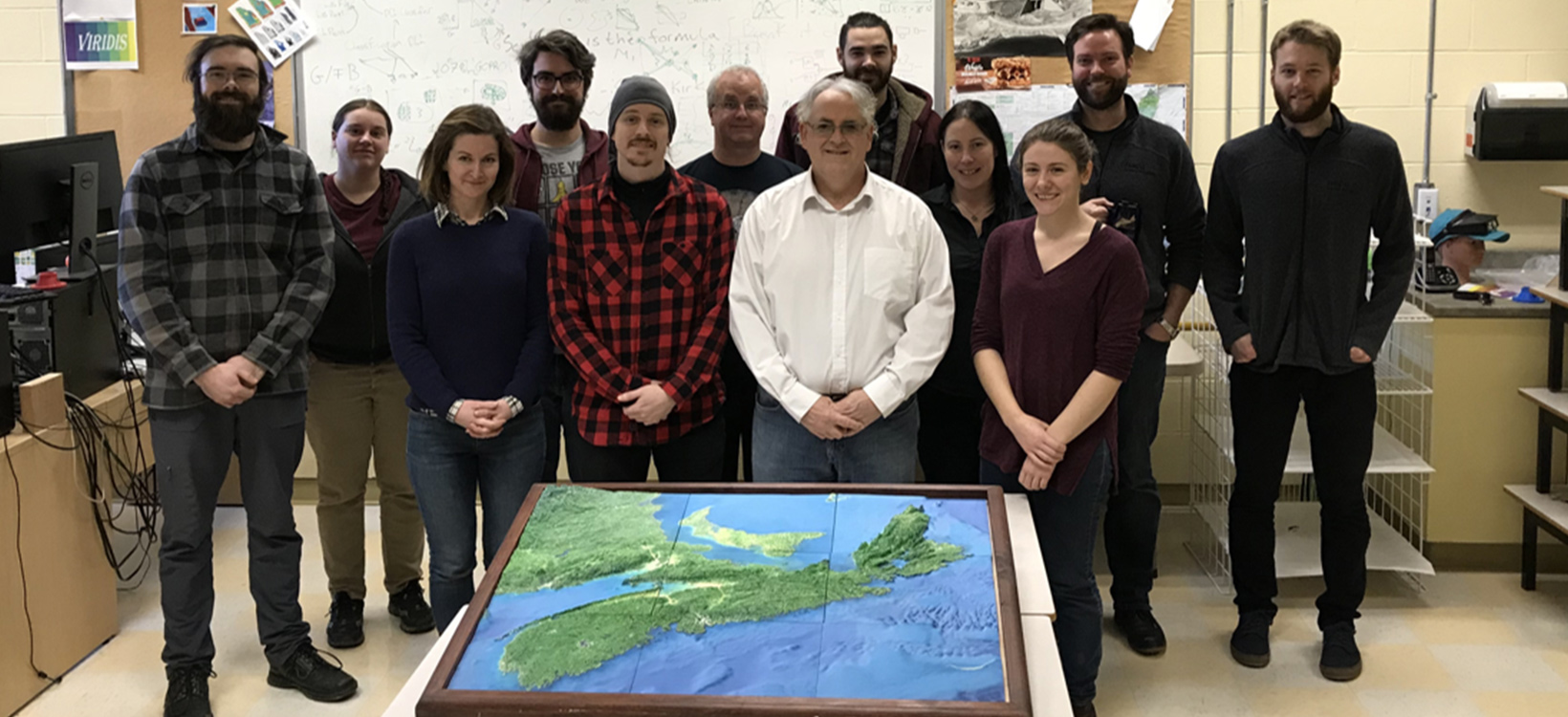
Dr. Tim Webster, research scientist at the Applied Geomatics Research Group (AGRG) from Nova Scotia Community College, was among the first to use the new Chiroptera 4X to survey the coastal zone of Cape John peninsula in Canada.
Mapping shallow water and coastal areas using traditional aerial photography or boat-based echo sounder methods can be costly, time consuming and challenging due to water clarity and unforeseen weather conditions. To overcome these challenges and increase productivity and data accuracy, Webster decided to use the Chiroptera 4X bathymetric and topographic LiDAR in his geomatics research.
The purpose of the geomatics research was twofold. First, the team mapped the benthic habitat and the existing aquaculture in the bay, including the mapping of the shellfish infrastructure and the buoys to estimate how much biomass is being grown.
The second goal of the research was to develop a hydrodynamic model to help the lease of new oyster farms and propose the appropriate locations around the bay without damaging the sensitive Zostera marina or so-called eelgrass. The eelgrass beds are important for sediment deposition and nursery grounds for many species of fish and shellfish, thus it is used as an ecosystem health indicator by Fisheries and Oceans Canada (DFO).
Webster has carried out similar research in the region of Maritime Canada in 2014 on how to optimise data collection and post-processing of shallow water topographic-bathymetric LiDAR survey using the Leica Chiroptera II. This time, the professor and his team had the chance to deploy the new Chiroptera 4X and compare the captured data with results from 2014. To quantify the improvement of the point cloud density and target identification of the new Chiroptera 4X, the team compared the captured data of three surveying instruments:
- Chiroptera II
- Chiroptera 4X
- Multibeam echo sounder.
This geomatics experiment involved the target surveying of four 1 cubic metre cubes at different water depths to determine the level of detail and data provided by the three different sensors.
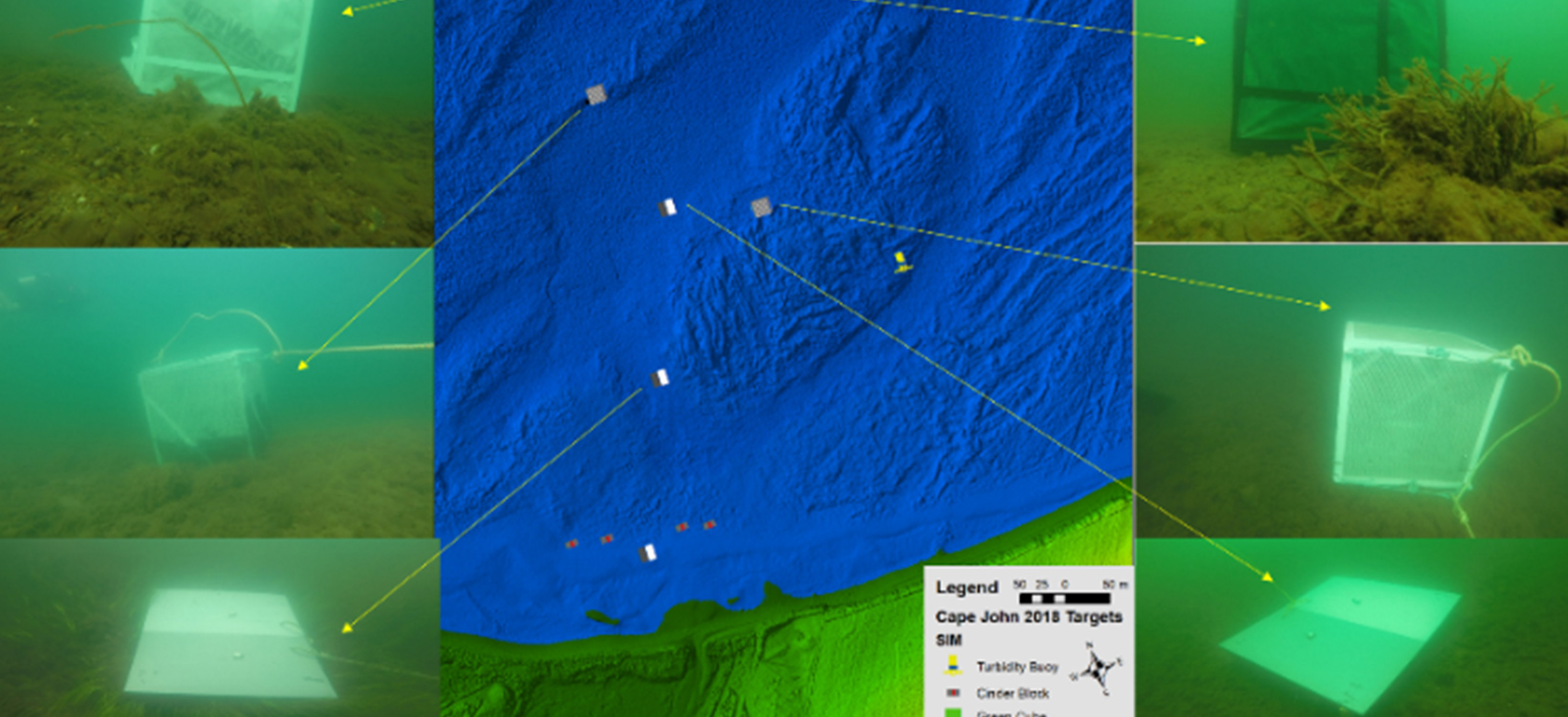
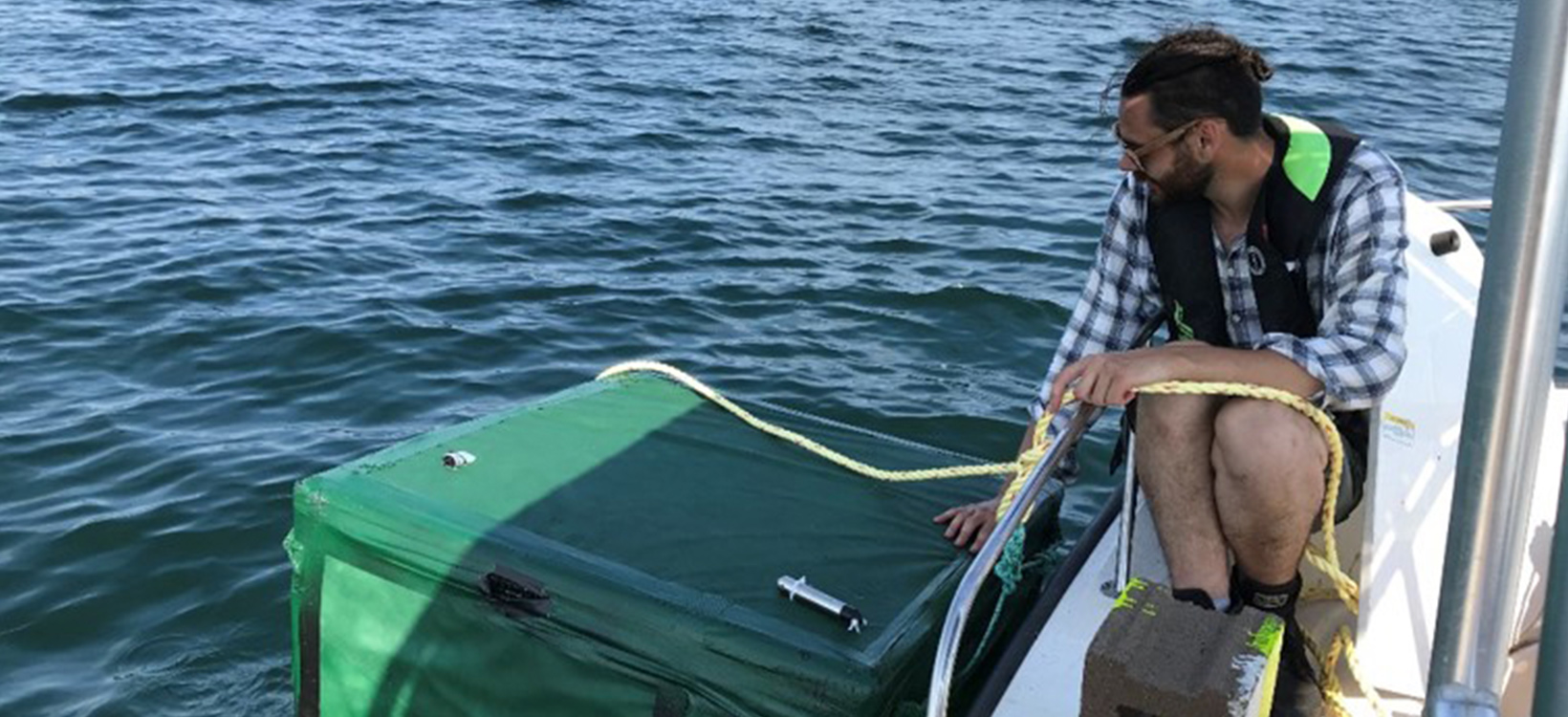
Flying the Chiroptera 4X over the bay, the research team collected information on the surveying targets and compared the captured data of the terrain and seabed from 2014 with the data from this experiment carried out in 2018. Using the four cubes and other flat targets captured with the three different survey methods, researchers compared:
- Point cloud density
- Orthophoto mosaics
- Digital Elevation Model
- LiDAR amplitude.
The analysis of the captured data was completed using the discrete points derived from the waveform data in Leica LiDAR Survey Studio post-processing software for point cloud generation and cleaning of raw LiDAR data.
“This particular experiment was to quantify the accuracy and level of detail of the Chiroptera 4X and we are very pleased with the results,” reported Webster. “The results show a significant increase in point density comparing to other equipment, improved target detail, detection limits, and potential for more direct benthic point classification.”
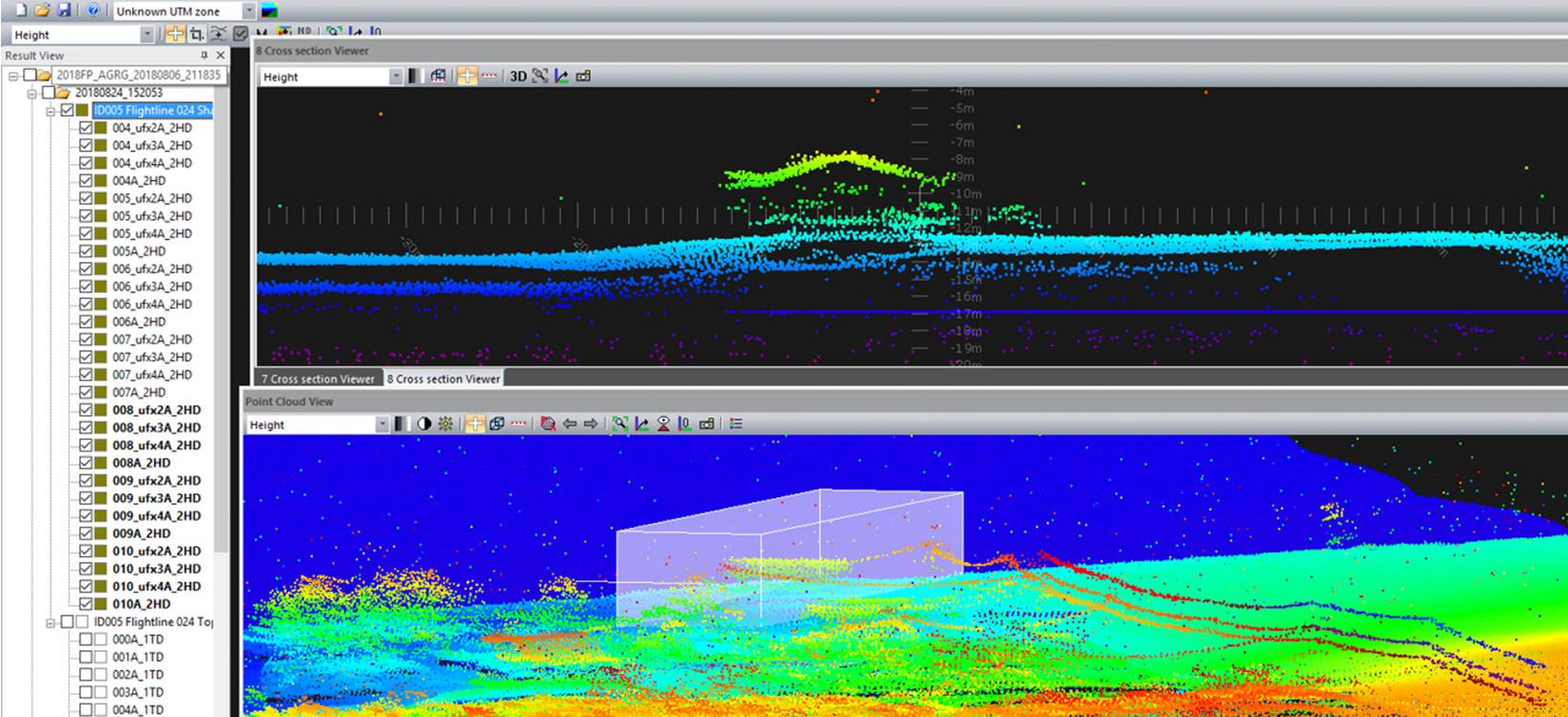
Taking advantage of the Chiroptera 4X’s near-infrared laser for topographic data collection combined with a green laser for bathymetric data collection, the research team precisely captured underwater features and generated virtual reality elevation models to study the benthic habitat. Additionally, researchers proposed sustainable locations for oyster farming without damaging the eelgrass habitat.
“This advancement of Chiroptera 4X is a significant breakthrough in terms of point density and it improved the resolution of our coastal zone mapping,” said Webster. “In any application where target detection is important, I would see the increased benefits of the Chiroptera 4X in industries like hydrography and archaeology.”
Safe and reliable passage through Pacific waters
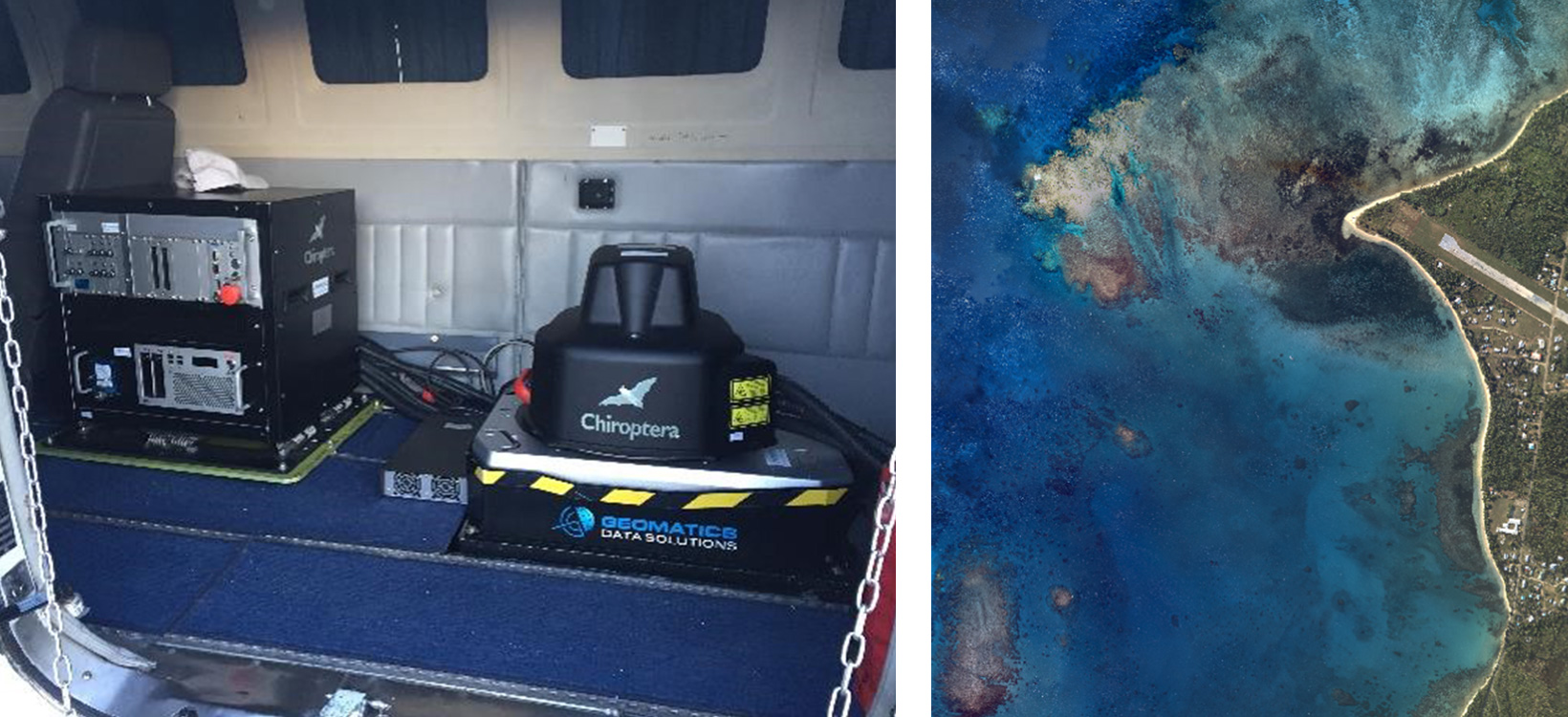
The Pacific is an extremely culturally diverse region, as exemplified by the more than 1,000 languages spoken and, yet, what connects them is the water. The ocean and coastal seas have long been integral to the Pacific way of life. The economy, transportation and culture of those sharing the Pacific waters is based on the naval and marine infrastructure and ecosystem this ocean provides. Even though marine navigation plays a key role in the archipelago, the South Pacific is inadequately charted.
Shallow water depth range data is critical for safe marine navigation and for construction of harbours, pipelines and any other infrastructure in the coastal area or shallow offshore zones. Without precise information on water depth and the exact location of underwater features and submarine canyons, economic and sustainable development is negatively impacted.
iXBlue together with project partners Geomatics Data Solutions (now Woolpert, Inc.) and EOMAP Australia were requested to map the Tongan archipelago and surrounding areas to provide the 3D water depth information and improve the nautical chart of the region.
The project was part of the Pacific Regional Navigation Initiative (PRNI), an overarching programme geared towards the safe and reliable passage through the Pacific Ocean while protecting the environment and allowing Pacific island economies to develop. The project was sponsored by the New Zealand Ministry of Foreign Affairs and Trade (MFAT) in partnership with the Land Information New Zealand (LINZ).
The Kingdom of Tonga, a Polynesian archipelago comprising of 169 islands, stretches across approximately 800 kilometres in the South Pacific Ocean. In Tonga, agriculture, fishing and forestry provide the majority of employment, therefore, detailed data on both land and shallow water features can support the sustainable development of the island group.
Considering the relatively large area in need of high-resolution survey and charting, LINZ required a smart solution to bring the most out of the tight budget. iXBlue, together with EOMAP Australia and Geomatics Data Solutions, applied a multi-sensor approach to collect topographic and bathymetric data, including:
- Satellite-Derived Bathymetry (SDB)
- Airborne Laser Bathymetry (ABL)
- Multibeam Echosounder (MBES)
- Tide gauge install and datum computations.
SDB surveys are very effective tools in mapping large areas to the visible water depth, however to capture high-resolution data on land and underwater the Chiroptera 4X ALB was used.
The Chiroptera 4X was installed in a Cessna 441 to acquire data for Tonga and Niue, including Beveridge Reef, covering approximately a 633-square-kilometre area. Geomatics Data Solutions experts collected both high-resolution bathymetric and topographic data on- and offshore and compared the results of the Chiroptera 4X to SDB.
“Having the extra density of the Chiroptera 4X, compared to the Chiroptera II, allows us to run spatial algorithms while reducing the risk that we are accidentally removing seabed objects from the dataset. In other words, it improves our target recognition probability,” said Carol Lockhart of Geomatics Data Solutions.
Beside the bathymetric data of the seafloor, one of the unexpected benefits Geomatics Data Solutions gained from using Chiroptera 4X was the improved penetration of the denser bathymetric laser data on land, providing full coverage even on dense vegetation where the topo laser did not penetrate.
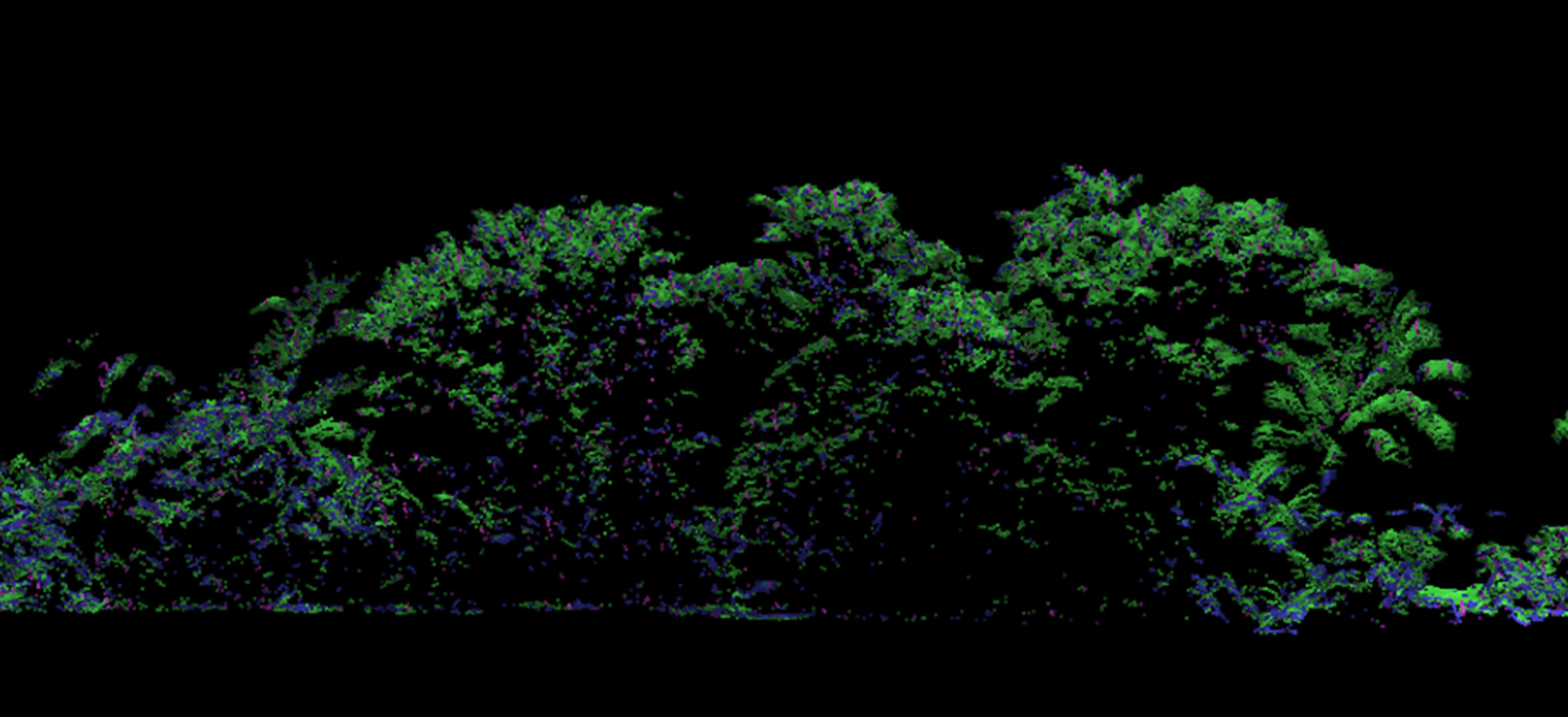
“Local stakeholders will receive full imagery and the topo-bathy dataset, so they can also benefit from the high-resolution data provided with the new Chiroptera 4X, and can use the data for other purposes in addition to improving the nautical charts,” explained Lockhart.
The combined approach of different surveying equipment provided the complete knowledge of all navigational-significant features and additional topographic information of the islands. Thanks to the 4X technology of the newly-released Chiroptera, experts surveyed at four times the sounding density than it was previously possible.

























